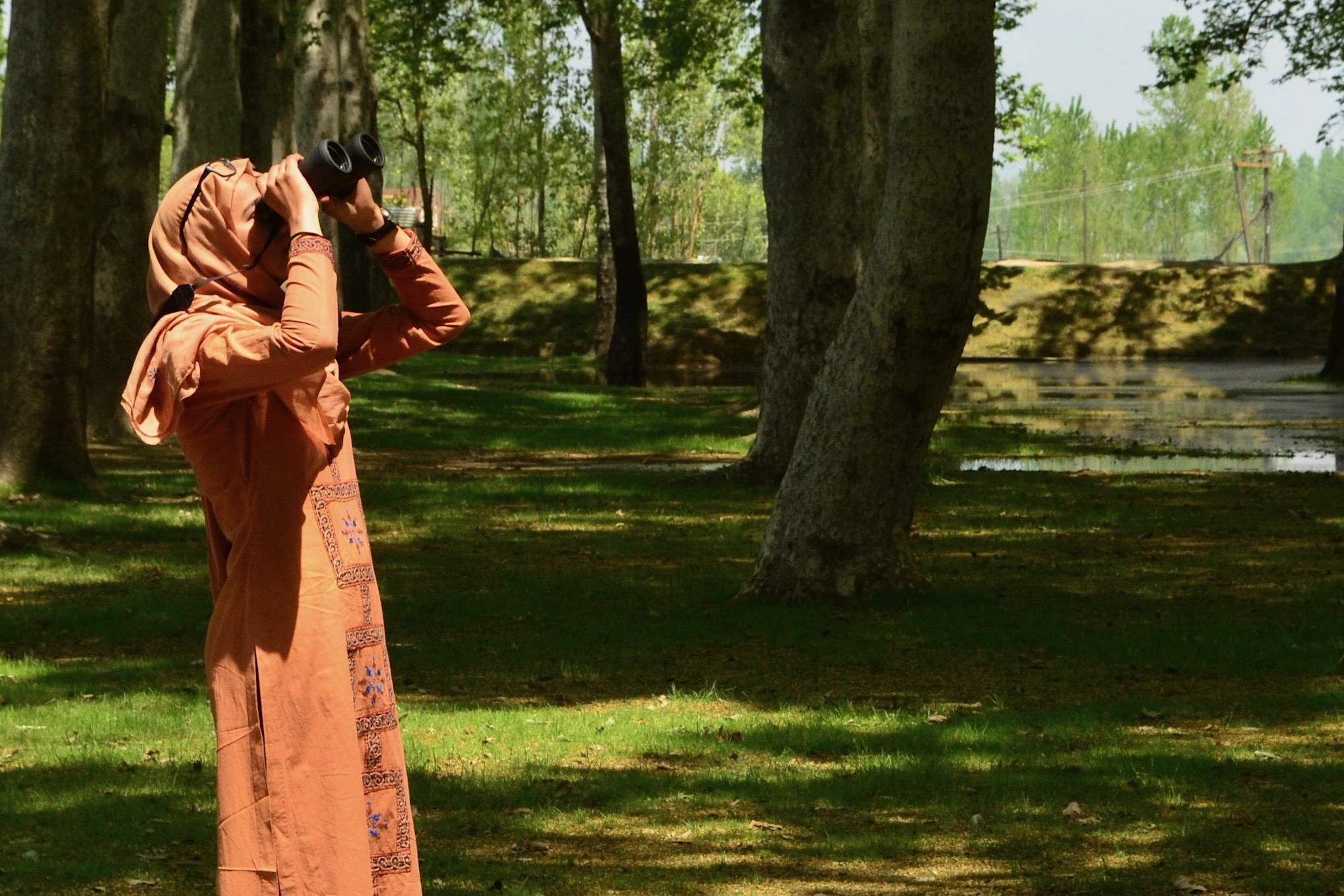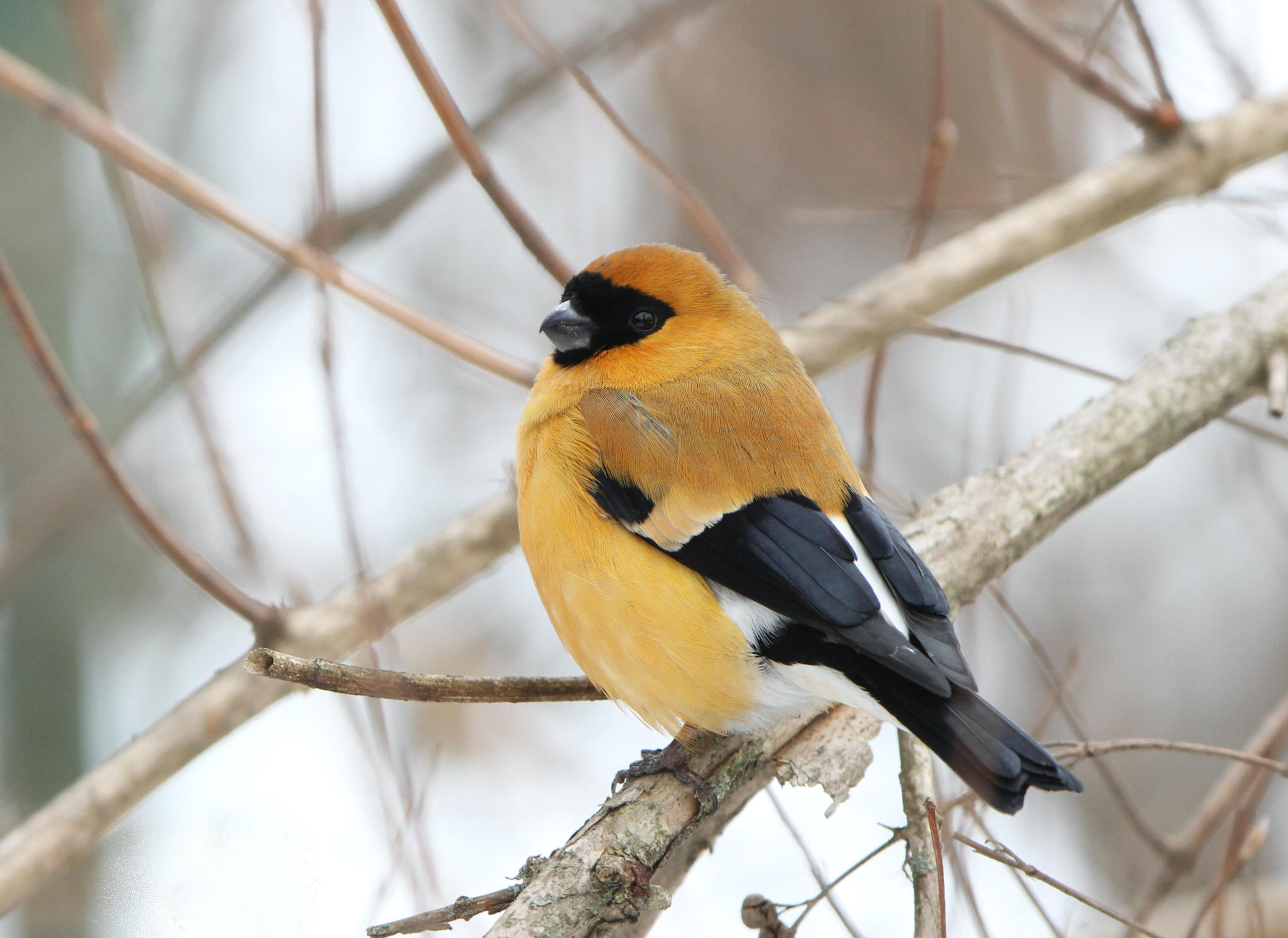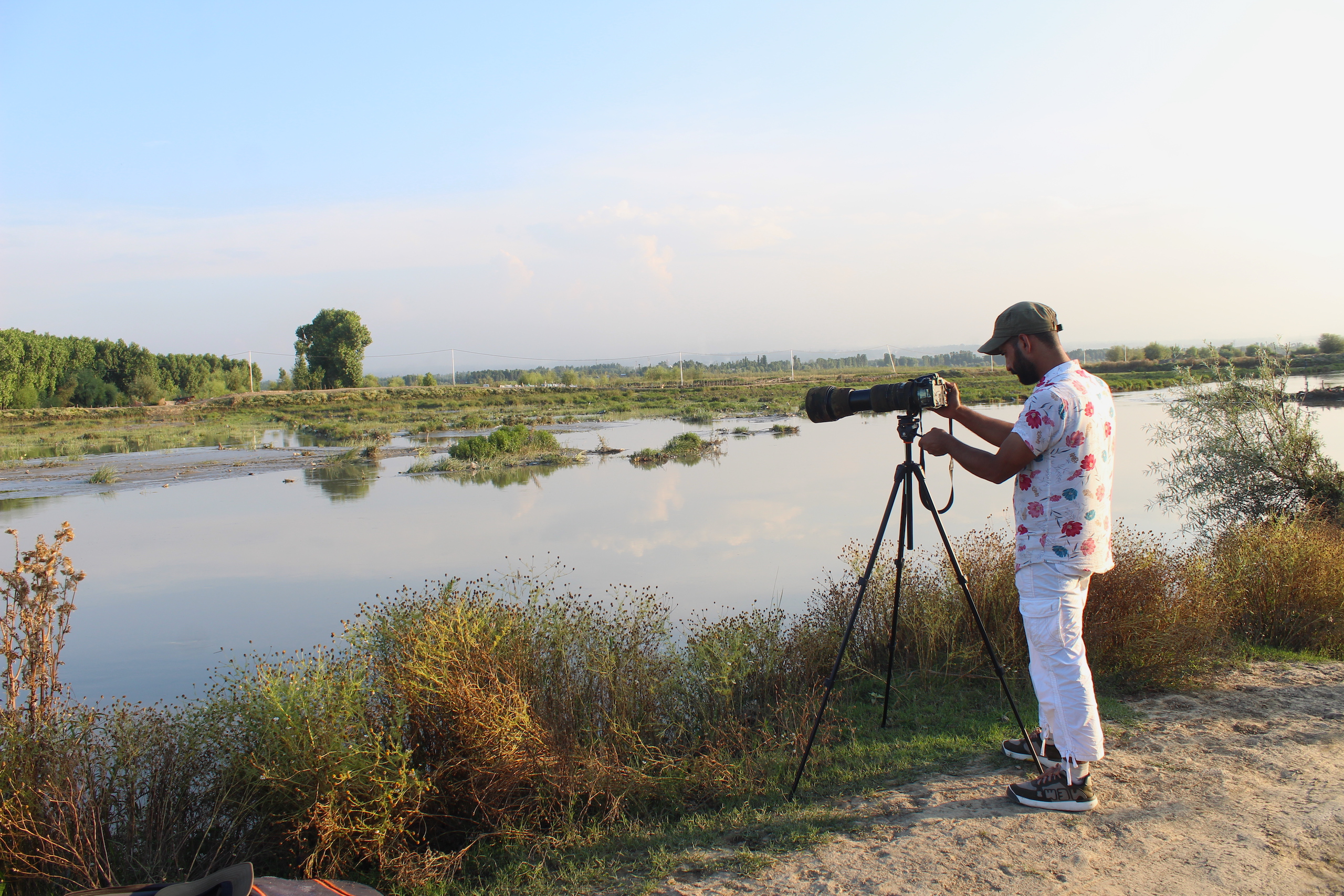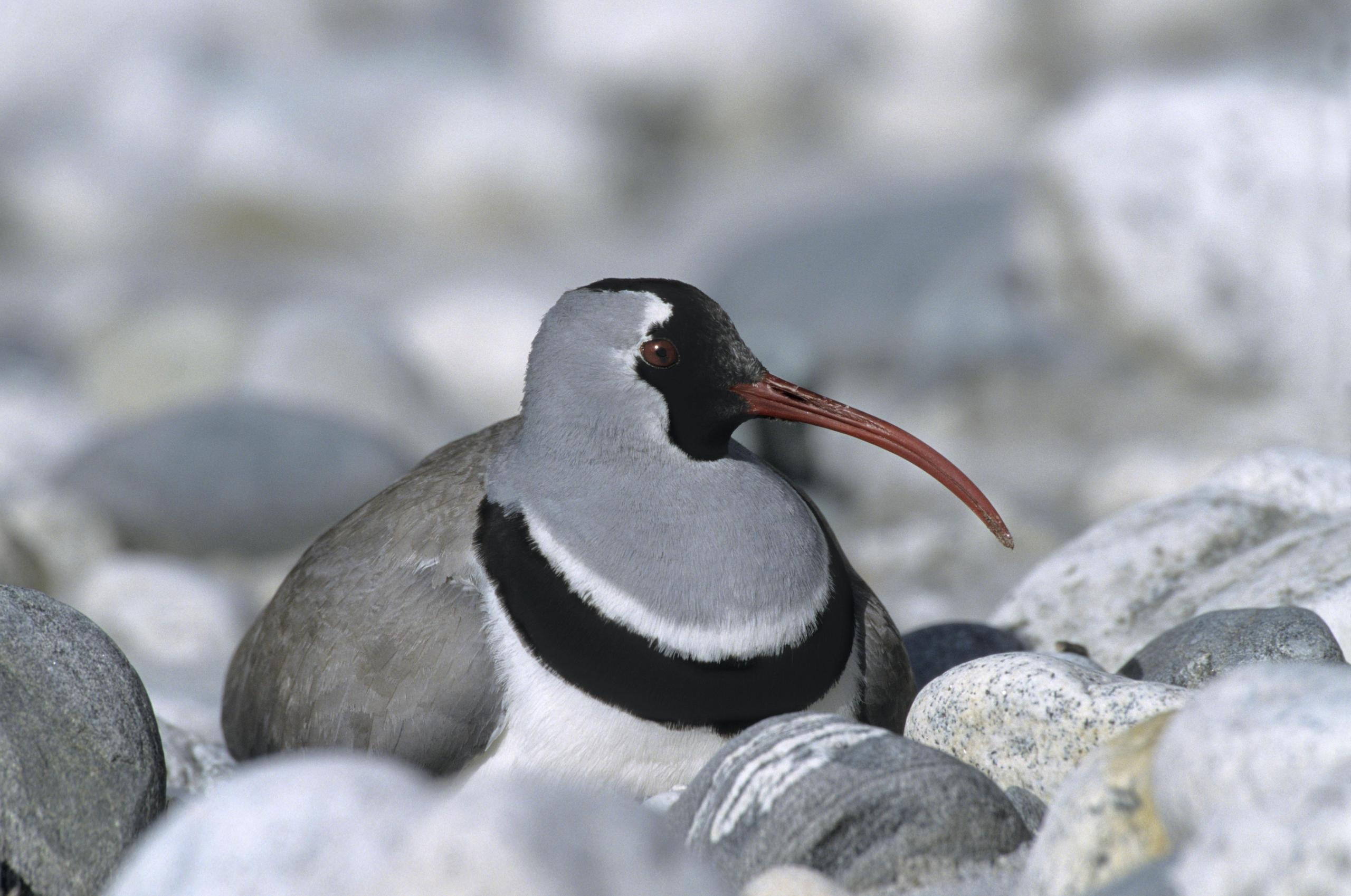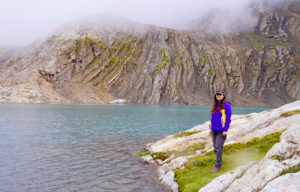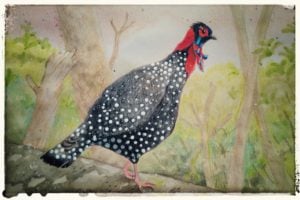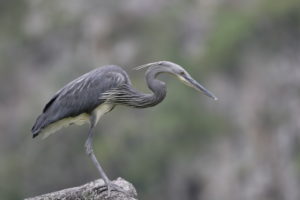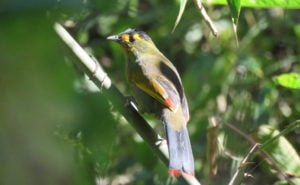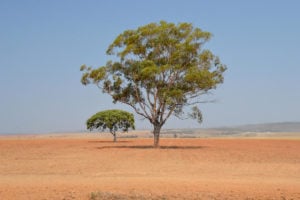At dawn on a Sunday in July, a group of five people are arriving at Dachigam National Park, tucked into the foothills of the Zabarwan Mountains in Kashmir. Amid the chirping of birds and the early morning mist, the group leader, Intesar Suhail, traces the route they will be taking on a map. The group is armed with binoculars, DSLR cameras with big zoom lenses, and tripods. While the park is home to the critically endangered hangul red deer (also known as the Kashmir stag) and other famed mammals, the group are on a quest to find birds.
“We’re here today, we’ll be at some other place next week. This constant longing for birds never ceases,” says Suhail, who is also an official at the Kashmir wildlife department, serving as the warden for Shopian and Pulwama districts.
Suhail’s group is not an exception: hundreds of people across Jammu and Kashmir and Ladakh are actively exploring an interest in birds and their conservation. Mirroring a trend noted in other parts of the world, key figures on Kashmir’s birdwatching scene tell The Third Pole that this interest has proliferated significantly since the Covid-19 pandemic forced people to turn to their immediate surroundings for solace and diversion.
Kashmir’s growing birding scene
Tasaduq Mueen, a horticulturalist by profession, founded the birding club Kashmir Birdwatch in 2009. The group organises birdwatching trips, documents bird sightings and publishes research on Kashmir’s avifauna. For years, its membership was restricted to a small number of wildlife experts. But Mueen says that since 2020, the organisation has seen a swelling number of local people becoming members.
“From struggling to touch a double-digit number, we now run in the hundreds, which promises a great future,” says Mueen. Having been interested in birdwatching since his childhood, he attended many birdwatching camps in places like Haryana and Gujarat, but saw almost no interest in birds in Kashmir. He attempted to set up nature clubs in various Kashmir educational institutions in the late 1980s, but these faltered in the wake of insurgency.
Irfan Jeelani, a teacher from Ganderbal and an avid amateur birdwatcher, started the Facebook group ‘Birds of Kashmir’ at the start of the 2020 lockdown. It now has 9,000 members. “The aim was to converge birders at a platform across J&K and Ladakh with an underlying message to mobilise the masses towards birdwatching,” Jeelani tells The Third Pole. He says that interest in birds is growing, and that social media plays a key role by allowing enthusiasts to showcase their sightings.
Can bird sightings help science in Kashmir?
A checklist on the Jammu & Kashmir Department of Wildlife Protection’s website lists 213 bird species that inhabit the Himalayan region’s diverse wetlands, mountain slopes and lush green forests. Ifshan Dewan, wildlife warden for wetlands in Kashmir, puts the current number at around 350.
Some species, like the Kashmir flycatcher and orange bullfinch, breed only in Kashmir, luring birdwatchers from across India and beyond who hope to add them to their ‘life list’.
Birdwatchers are adding to scientific knowledge of the birds that live in and visit the region. Reyan Sofi, a 28-year-old birder and resident of Srinagar, claims to have seen more than 300 bird species in Kashmir since he started birdwatching in 2016. He says that his sightings of the black-necked grebe, common goldeneye and sharp-tailed sandpiper – all wetland birds that breed in the north and east – were the first in Kashmir in more than a century.
When birdwatchers spot a rare bird, as well as posting about it on social media, they often submit records to citizen science apps like eBird, and send notes for publication in journals like Indian Birds and the journal of the Bombay Natural History Society (BNHS).
Carol Inskipp, a famous ornithologist who has written important field guides on the birds of the Indian subcontinent, says that these records are notable. “Local birdwatchers in Kashmir have [contributed] – and continue to [contribute to] – important historical records, especially in recent years,” Carol says in an email to The Third Pole. “This trend is likely to continue as today birders usually have better optical equipment, access to better identification guides and improved access to information sources through the internet so they can more easily assess the value of their records.”
Asad R Rehmani, a board member and former director of BNHS, agrees that the citizen science emerging from birdwatchers in Kashmir is hugely significant. He considers it deserving of particular appreciation, given the region’s long-standing traditions of hunting and trapping. Illegal hunting still poses a serious threat to many of the birds that migrate to Kashmir for the winter. “Kashmir’s birdwatchers need to be more into conservation, less into birdwatching, towards building safe spaces and a promising future for birds,” he says.
For Mehreen Khaleel, a lifelong interest in birdwatching has inspired a career in science and conservation. Having completed a doctorate in ecological sciences, she founded a Srinagar-based non-profit organisation, the Wildlife Research and Conservation Foundation, to contribute to the research and conservation of birds. “I usually evaluate bird patterns, habitat choices and climate change-induced impacts on their movements, which will ultimately lead to a proper action and thus conservation,” says Khaleel, speaking with The Third Pole in July during her weekly birding trip. She has been joined by her parents who, after witnessing their daughter’s unwavering passion for birds, have finally decided to join her.
Birdwatchers step into conservation
Reyan Sofi recalls a day last year, when on a trip to Hokersar wetland he saw a group of mallard ducks struggling in a net thrown by nearby poachers. He raised the alarm with the local wildlife department, and on seeing officials approaching, the poachers fled. Sofi then went to rescue the birds.
Meanwhile, Irfan Jeelani says he has been writing to the Kashmir wildlife department and the Department of Geology and Mining to call for a stop to unregulated riverbed mining, which threatens the habitat of the rare ibisbill. Jeelani says he has also raised the issue on social media and called on other birdwatchers to help protect the bird’s habitat.
Rehmani of BNHS says that birdwatchers can become the “eyes and ears” of the Kashmir wildlife department. Appealing directly to birdwatchers, he says: “If you see poaching, which is very common in Kashmir, try to stop it, talk to criminal poachers politely, note the number of the vehicle, and report it to authorities. Do not take the law into your own hands.”
An ethical way forward for birdwatching in Kashmir
As birdwatching gains popularity in Kashmir and brings talent into the limelight, it opens up livelihood opportunities for locals, with visiting birders from across South Asia and overseas looking for expert guides.
But for Suhail, an increased commercialisation of birdwatching also brings risks. “We’re witnessing a trend of aiming baits and playing calls [to lure birds into the open] and unwarranted invasion into bird habitats merely for photographs. This all will upend their breeding habits, increase stress levels and change bird behaviour. This all needs to be scaled down and course-corrected,” he says.
Rashid Naqash, wildlife warden at the Kashmir wildlife department, says his department will support the development of birdwatching, given the potential conservation benefits: “We’re keen on encouraging birdwatching by conducting bird trips, programmes and awareness campaigns in schools and universities to imbibe greater sensitivity and concern towards birds.”
Adds Ifshan Dewan, wildlife warden for wetlands in Kashmir: “We’re trying everything possible to help, facilitate and encourage birdwatchers as they have brought laurels with their documenting, which in turn helps departments in their conservation … We’re working on funding, facilitation and vital support to fuel their growth. Certain big projects are on the anvil,” she adds.
“I think the increasing interest in birdwatching among locals in Kashmir will surely benefit bird conservation,” says Carol Inskipp. “Those who are interested in birds must care about birds and their future and are likely to take action for the long-term conservation of the birds and their habitats.”
